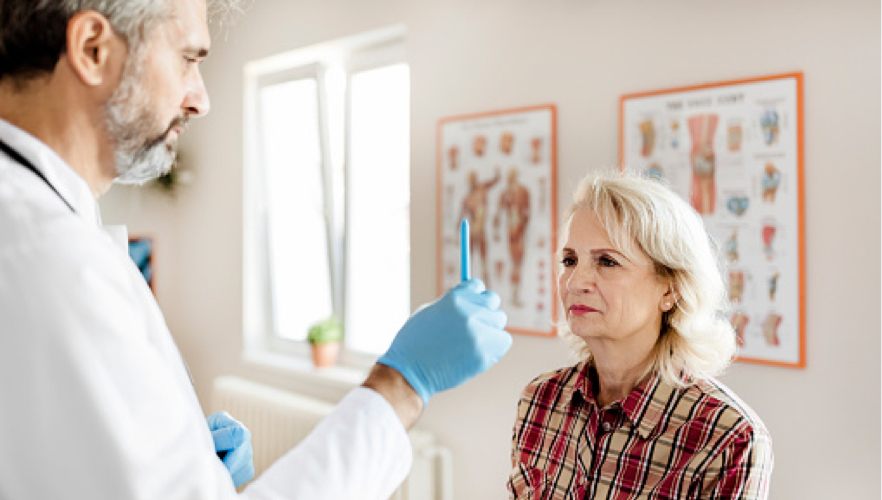Regular eye exams are important for maintaining overall eye health and detecting eye diseases, including eye cancer. Hear from Dr. Kosvitch, one of the eye care experts at Bailey Weber Wisner, on how eye cancers can be detected and treated.
What is eye cancer?
Fortunately, eye cancer is not particularly common. However, it is possible, and when left untreated for too long, it can cause permanent vision loss and metastasize, spreading to other parts of the body. As with most cancers, left untreated, eye cancers carry a risk of severe illness and death — particularly if the cancer spreads to other parts of the body. The most common type of eye cancer is melanoma, which can occur in different eye parts: the iris, the choroid, and the ciliary body.
How is eye cancer detected?
Regular eye exams play an important part in the detection of ocular melanoma. Your eye doctor will be able detect changes in your eye, including those that could be indicators of eye cancer. Eye cancer can start from a mole on the eye, which could appear as a dark spot on the white or iris of the eye, but it could also be on a part of the eye that you cannot see, meaning there are no initial symptoms that you can detect at home. Regular eye exams allow your eye doctor to keep track of changes to the eye and watch for key signs of eye cancer. They also allow your eye doctor to view parts of the eye that you can’t see in the mirror, where the symptoms of cancer or other eye issues might be present, unbeknownst to you.
What are the risk factors for eye cancer?
Like with many cancers, specific and unique causes for eye cancer have not been identified. However, certain genetic and lifestyle factors may put you at a greater risk of eye cancer. The risk of eye melanoma is much higher in Caucasians. Eye color affects your risk of ocular melanoma, as people with lighter-colored eyes are more likely to develop ocular melanoma than those with darker-colored eyes.
Other genetic conditions may also put you at a higher risk of developing eye cancer. Several conditions that put people at an increased risk of skin melanoma, such as dysplastic nevus syndrome, also increase the risk of eye melanoma. If you are at an increased risk of skin melanoma, you may want to consider increasing the frequency of your regular eye exams to detect potential signs of melanoma in the eye.
As with many eye conditions, the risk of eye cancer also increases with age. As patients become older, especially after they pass the age of 60, they should consider having more frequent eye examinations. Your eye doctor will be able to provide personal recommendations for how frequently you should have your eyes examined. Still, generally, it is recommended that patients aged 60+ have eye exams at least annually.
Lastly, there has been some suggestion that UV light entering the eye increases the risk of eye melanoma. We know that UV light increases the risk of skin melanoma and may have a similar effect on the eye. For a variety of eye health reasons, including cancer prevention, it is recommended that you protect your eyes from sunlight just as you would your skin. Seek out UV protective glasses and pay attention to the UV light levels, trying to avoid prolonged and repeated exposure to high UV levels.
While ocular melanoma is, fortunately, a more uncommon form of cancer, it can still have a lasting impact on your overall health. Regular eye examinations, especially if you fall into a high-risk category, will help with the early detection and treatment of eye cancers and many other eye conditions.
